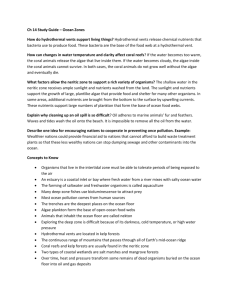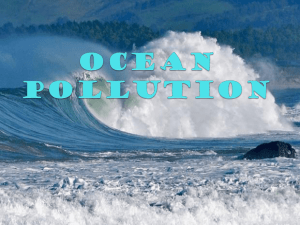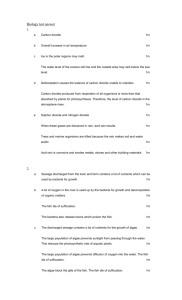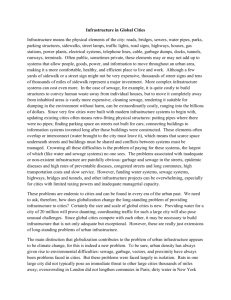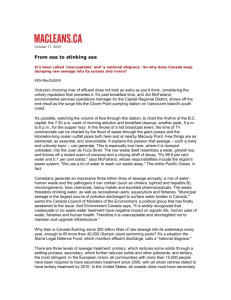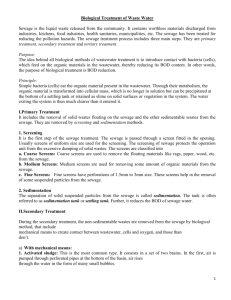Read the following text after you have evaluated the anticipation
advertisement
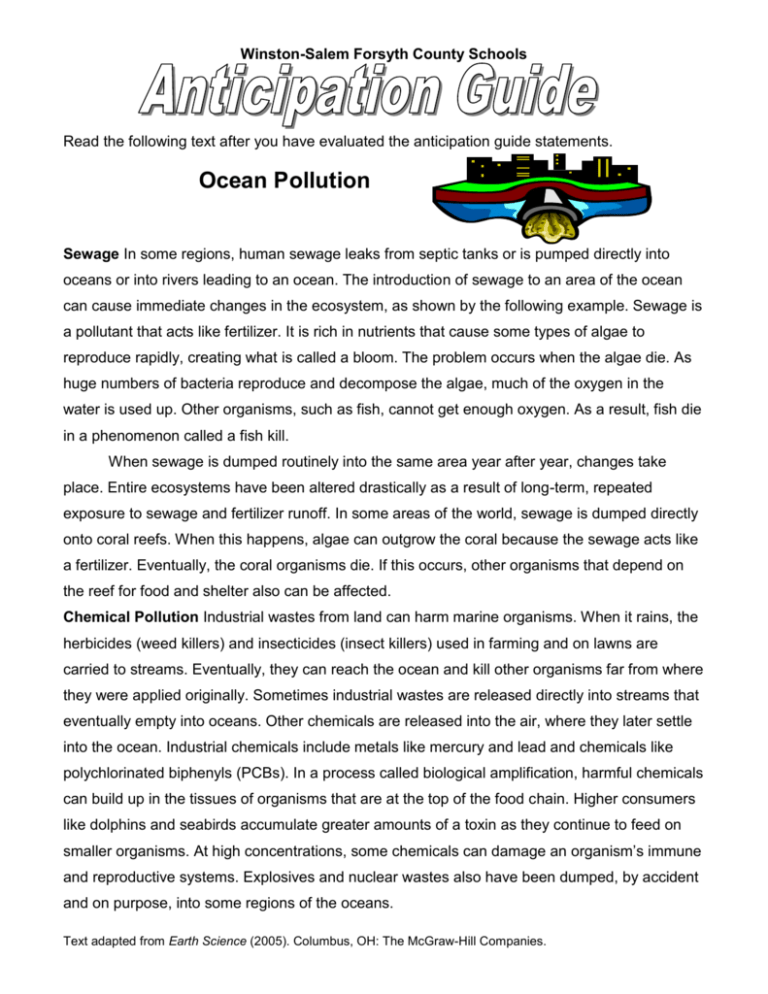
Winston-Salem Forsyth County Schools Read the following text after you have evaluated the anticipation guide statements. Ocean Pollution Sewage In some regions, human sewage leaks from septic tanks or is pumped directly into oceans or into rivers leading to an ocean. The introduction of sewage to an area of the ocean can cause immediate changes in the ecosystem, as shown by the following example. Sewage is a pollutant that acts like fertilizer. It is rich in nutrients that cause some types of algae to reproduce rapidly, creating what is called a bloom. The problem occurs when the algae die. As huge numbers of bacteria reproduce and decompose the algae, much of the oxygen in the water is used up. Other organisms, such as fish, cannot get enough oxygen. As a result, fish die in a phenomenon called a fish kill. When sewage is dumped routinely into the same area year after year, changes take place. Entire ecosystems have been altered drastically as a result of long-term, repeated exposure to sewage and fertilizer runoff. In some areas of the world, sewage is dumped directly onto coral reefs. When this happens, algae can outgrow the coral because the sewage acts like a fertilizer. Eventually, the coral organisms die. If this occurs, other organisms that depend on the reef for food and shelter also can be affected. Chemical Pollution Industrial wastes from land can harm marine organisms. When it rains, the herbicides (weed killers) and insecticides (insect killers) used in farming and on lawns are carried to streams. Eventually, they can reach the ocean and kill other organisms far from where they were applied originally. Sometimes industrial wastes are released directly into streams that eventually empty into oceans. Other chemicals are released into the air, where they later settle into the ocean. Industrial chemicals include metals like mercury and lead and chemicals like polychlorinated biphenyls (PCBs). In a process called biological amplification, harmful chemicals can build up in the tissues of organisms that are at the top of the food chain. Higher consumers like dolphins and seabirds accumulate greater amounts of a toxin as they continue to feed on smaller organisms. At high concentrations, some chemicals can damage an organism’s immune and reproductive systems. Explosives and nuclear wastes also have been dumped, by accident and on purpose, into some regions of the oceans. Text adapted from Earth Science (2005). Columbus, OH: The McGraw-Hill Companies.


